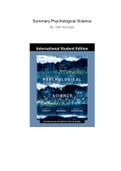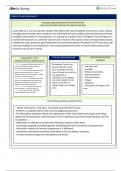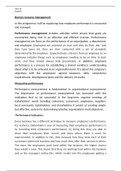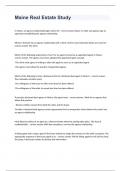Samenvatting
Samenvatting Psychological Science
- Instelling
- Rijksuniversiteit Groningen (RuG)
Dit is de samenvatting van alles wat je nodig bent voor het tentamen van overzicht van de psychologie. Alles is vrij kort samengevat met ondersteuning van plaatjes.
[Meer zien]








